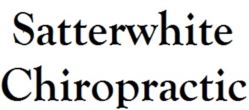- Le-Boeuf-Yde reviews 47 studies related to the topic and reports that smoking should be considered a weak risk indicator and not a cause of low back as there was no consistency in the data of statistically significant positive association of smoking and back pain. (1)
- In a Turkish study of factors that may influence back pain, it was found that the highest incidence of back pain was in housewives, but depression and body mass were higher risks for low back pain than smoking, hypertension or diabetes. (2)
- In a study of a developing country and the prevalence of low back pain, 7000 participants were selected and nearly 5000 responded to questionnaires about their lifestyles and back pain. It was found that low back is associated with occupation and influences disability and quality of life, but smoking is not associated with having low back pain. (3)
Now, with that out of the way, let's consider the negative impact smoking is documented to have on back pain, pain perception and lifestyle.
Smoking Is An Influence on Pain and Back Pain Specifically
About 1 in 5 Americans smoke (4), so Oxford is likely to have smokers like anywhere else. Smoking is a leading preventable cause of disease and death in the
In a large scale review of 81 studies and 40 studies analyzed on the topic of smoking and back pain, the association between smoking and back pain prevalence is reported as modest. However, it was found that both current and former smokers have a higher prevalence and incidence of low back pain than non-smokers. This association is even stronger in adolescent smokers than adult smokers. (6)
Since chronic low back pain is one of the main causes of disability in the community, likely even low back pain in Oxford, researchers studied 73,507 Canadians (aged 20 to 59 years) to report on their chronic low back pain status as well as other factors like smoking. Daily smokers have a prevalence of 23.3% for chronic low back pain versus only 15.37% in non-smokers. Occasional smokers were found to have only a slightly increased change of having chronic low back pain. Daily smoking increases the risk of low back pain in young adults. (7)
Another Canadian study reports that persons with chronic low back pain were more likely to smoke than those without chronic low back pain or arthritis. (8)
A significant association between tobacco smoke and pain is reported in smokers and non-smokers exposed to environmental smoke. This study done in
Does Stress and Smoking have an Influence on Back Pain?
Certainly. A study of 571 individuals who experienced onset of low back pain at 32 and 33 years of age and 5210 individuals who were pain free at that age were compared for risk facts (smoking, psychological distress at 23 years of age, social class, childhood emotional status, body mass index, job satisfaction). Psychological stress more than doubles later risk of low back pain, and smoking modestly influences it. The other factors did not significantly influence low back pain onset. (10) Smoking influences back pain in Oxford.
Smoking and Exercise in Low Back Pain Patients
- 33% of low back or leg pain sufferers smoked.
- 14% of those without pain smoked.
- 47% of low back or leg pain sufferers exercised
- 86% of those without pain exercised.
It is suggested, therefore, that the level of physical activity and general exercise improves strength, mobility and endurance, possibly enough to prevent future back injury. (11)
Research reports the negative health effects of smoking like poor physical fitness and reduced muscle strength. Smokers are found to have reduced muscle strength and fatigability of the lumbar spine extensor muscles, making them possibly more vulnerable to back injuries. This study does report that weakness is reversible with rigorous exercise. (12)
Conclusion
Contact Satterwhite Chiropractic in Oxford for chiropractic care of your spinal pain condition and consultation on healthy lifestyle choices if you like.
References
(1) LeBoeuf-Yde C: Smoking and low back pain. A systematic literature review of 41 journal articles reporting 47 epidemiologic studies. Spine 1999; 24(14):1463-70
(2) Altinel L, Kose K, Ergan V, Isik C, Aksoy Y, Ozdemir A, Toprak D, Dogan N:The prevalence of low back pain and risk factors among adult population in Afyon region, Turkey. Acta Orthop Traumatol Turc 2008; 42(5):328-33
(3) Oksuz E: Prevalence, risk factors, and preference-based health states of low back pain in a Turkish population. Spine 2006; 31(25):E968-72
(4) Cigarette Smoking Among Adults -
(7) Alkherayf F, Agbi C: Cigarette smoking and chronic low back pain in teh adult population. Clin Invest Med 2009; 32(5):E360-7
(8) Zvolensky MJ, McMillan KA, Gonzalez A, Asmundson GJ: Chronic musculoskeletal pain and cigarette smoking among a representative sample of Canadian adolescents and adults. Addict Behav 2010; 35(11):1008-12 Epub 2010 Jun 23
(9) Pizinger C, Aadahl M, Toft U, Birke H, et al: The association between active and passive smoking and frequent pain in a general population. Eur J Pain 2010 Jun 2 [epub ahead of print]
(10) Power C: Predictors of low back pain onset in a prospective British study. American J of Public Health 2001;91(10):1671
(11) Cox JM, Trier KK: Exercise and smoking habits in patients with and without low back and leg pain. J Of Manipulative and Physiological Therapeutics 1987; 10(5):239-245
(12) Kumar GP: Assessment Of Fatigue Susceptibility Of The Lumbar Extensor Muscles Amongst Smokers. Biomedical Engineering-Applications Basis Communications 2010;22(4):321-326
